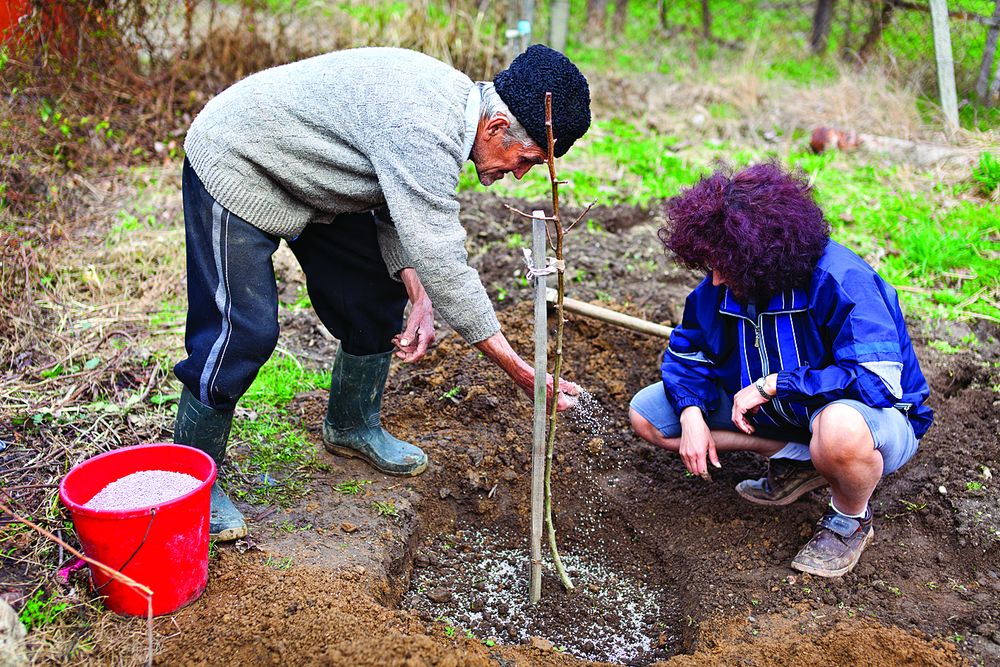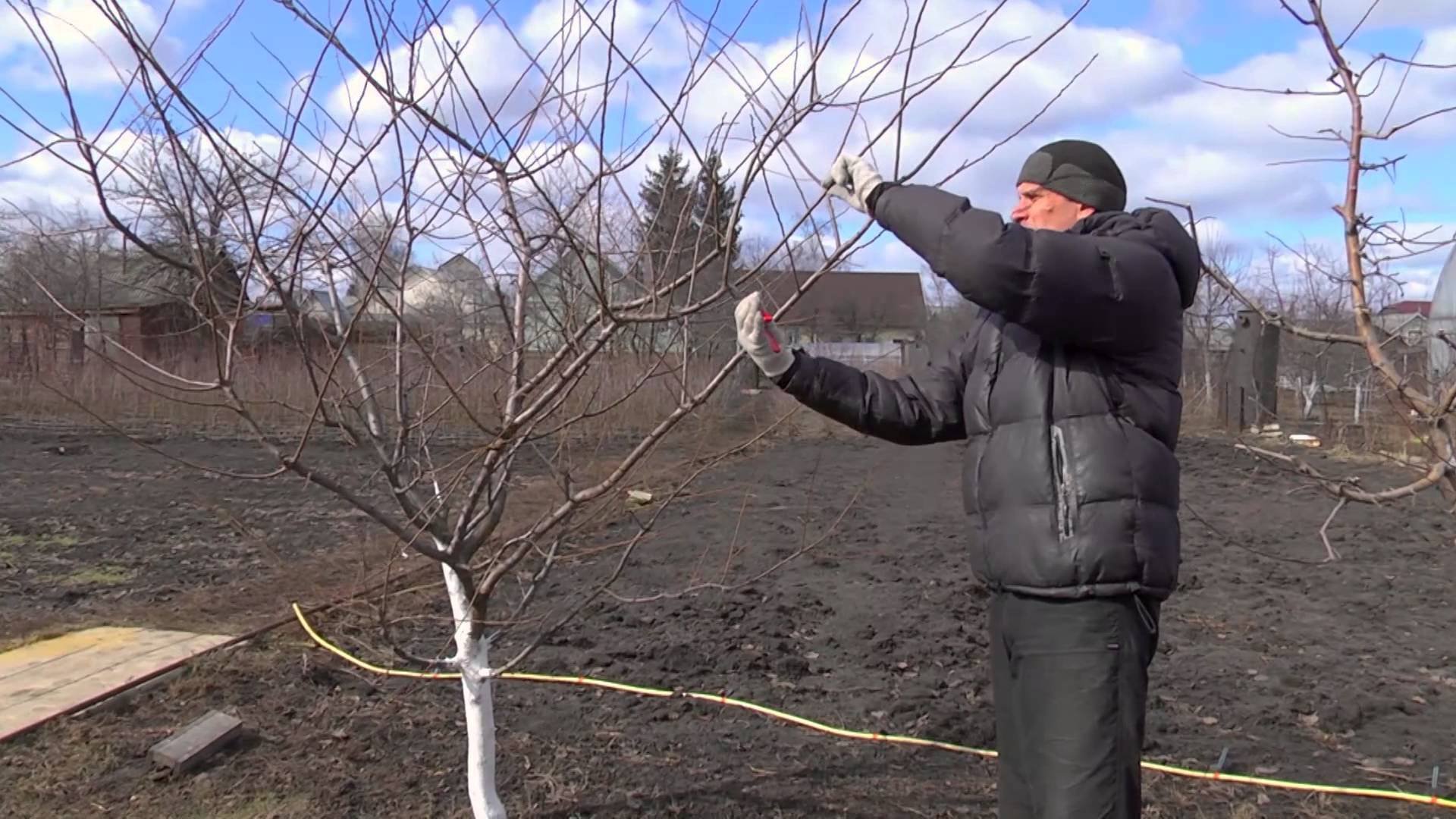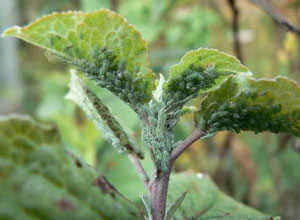The correct scheme for pruning plums in the fall is considered a very difficult and responsible task. If you make even the most minor mistakes, the crop will be rather meager. To avoid such negative consequences, you need to adhere to the basic rules that have been repeatedly tested by experienced gardeners. Timely removal of unnecessary branches will reduce the sensitivity of the plum to frost, and the tree will not freeze in winter.
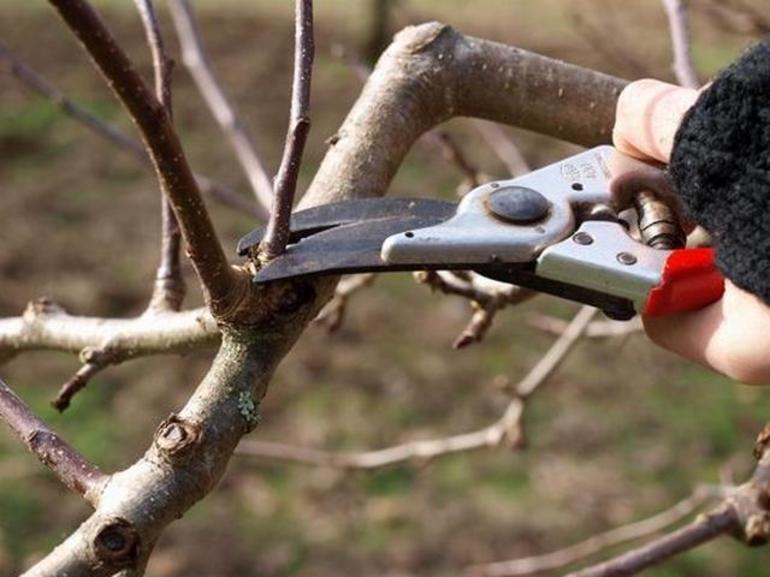
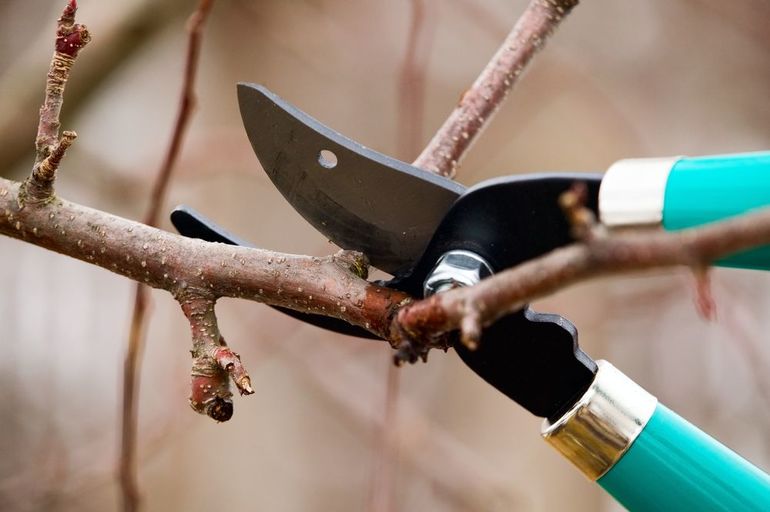 You may be interested in:
You may be interested in:Content
The main purpose of the procedure
Autumn pruning is based on the correct formation of the crown, so that the sun's rays can freely penetrate into all parts of the plant. A positive result can only be achieved if annually removing unnecessary shoots that obscure the central stem and skeletal branches. As a result, the seasonal yield will increase, and the appearance of the garden will also improve.
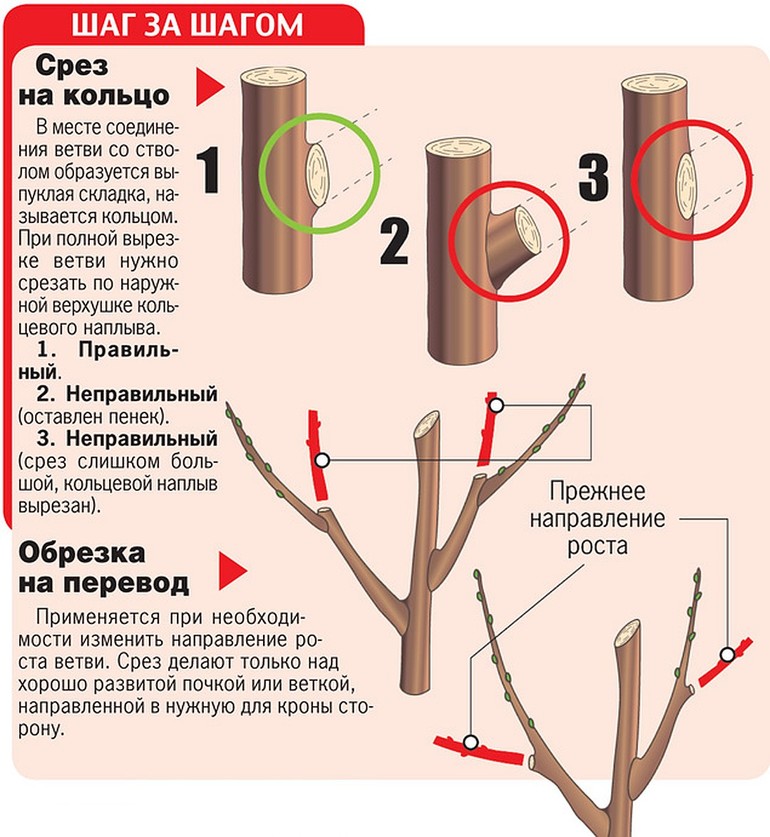
The optimal cutting time is selected depending on the completion of leaf fall. Most often this is mid-September. At this time, the plum begins to actively prepare for the vegetative dormancy, due to which it easily tolerates such manipulations. The gardener should not put off pruning branches in a long box. Before the first frost, the tree needs to be able to “heal” all received wounds, which often cause freezing.
The gardener must help the tree recover in a short time. After removing the branches, it is necessary to lubricate each section with a special var or olive oil-based paint. This procedure is carried out to quickly heal damaged tissues of the tree and to prevent the penetration of pathogens into them that can cause irreparable harm to the plant.
To properly cut the plum in the fall according to the scheme, you need to use high-quality tools - secateurs, a garden saw, a sharp knife. At the first stage, you need to make sure that the blades of all devices are well washed and sharpened. Using a blunt pruning shears or saws can seriously damage the plant, resulting in large area lacerations. The cleanliness of the blades is important so that no infection with parasites or fungi occurs.
Tool preparation and trimming technique
Each gardener should have a special set of devices, thanks to which the care of the trees will be easy and quick. You can purchase the necessary tools in a specialized store:
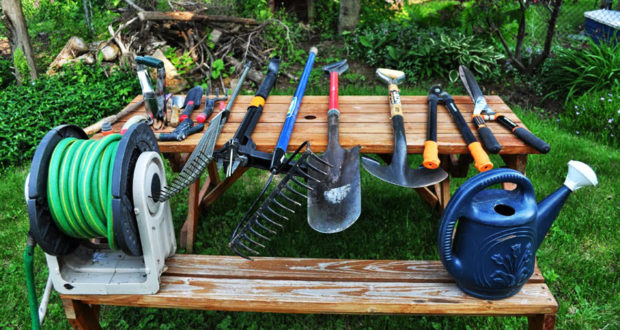
- Lopper for small branches up to 50 mm thick. Convenient long handles of this tool allow you to penetrate the thickened crown.
- Secateurs for branches 25 mm thick. For live shoots, experts recommend using a bypass model, but for dried shoots - an anvil tool.
- Garden knife for removing bumps and burrs.
- Large and small saws, which are necessary for working with branches with a thickness of 50 mm (live and dry).
Crown decoration in spring
The first three years with the arrival of heat, it is necessary to trim the extra branches, since the quality and quantity of fruits depends on this. If the gardener skips this procedure, the shoots will grow incorrectly and in a chaotic manner. Most often, plums are cut so as to form a certain tier. The basis should be taken 9 centimeters of thick and massive branches growing at a distance of 25 cm from each other.
The ideal option is when the shoots are evenly distributed along the entire trunk. The angle of their growth should be equal to 50 °. So that a novice gardener can get such a crown, he you need to perform the following actions for three years:
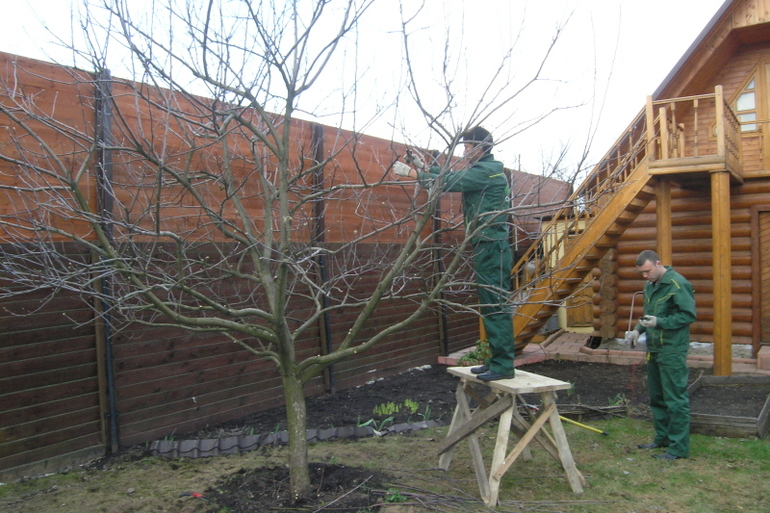
- In the first year, all lateral branches are necessarily removed from the plum, and the central conductor is cut to 70 centimeters. It is important to ensure that the tree is not contaminated with microorganisms and pests.
- The following year, the central shoot is shortened to 50 centimeters. The uppermost kidney is also cut, which should be located directly above the cut. Gardeners prune the lower lateral branches almost completely, leaving only small shoots of 8–9 cm. All remaining shoots are shortened by a third of their total length.
- In the third year, the gardener should choose 9 skeletal branches to remove all remaining shoots.
As soon as the main branches of the skeleton are noticeable in a young tree, it is necessary to ensure that the maximum angle of inclination is within 55 °. Abnormally growing shoots should be cut. All further trimming is based on maintaining the optimal shape of the crown. In this case, several basic rules apply:
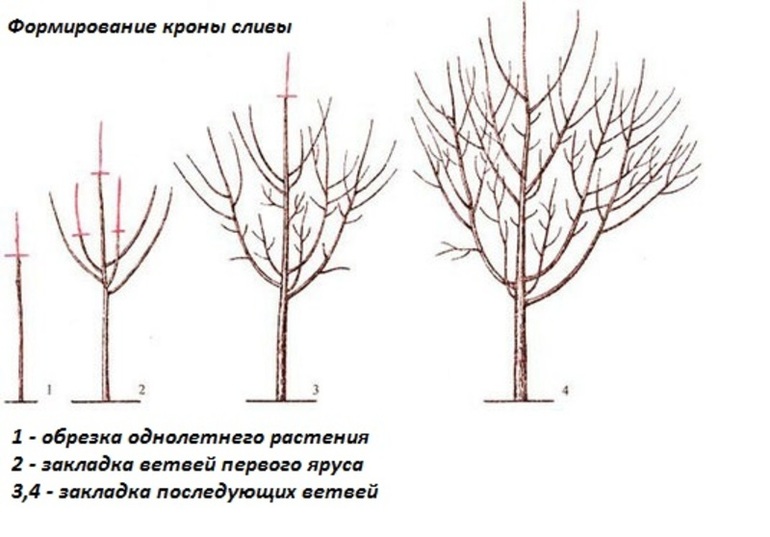
- When the crown is too lush, then it needs to be thinned out a bit, removing only the oldest branches, which can no longer produce fruit ovaries.
- Be sure to cut off those shoots that grow in the wrong direction (located at an obtuse angle or fill the inside of the crown).
- In early spring, the tree is carefully inspected for any damage. The gardener must cut off all the frozen and broken shoots that were damaged in the winter.
- To help the young plum properly form fruit branches, you need to carefully halve all last year’s growths.
 You may be interested in:
You may be interested in:It is worth noting that those areas where the kidneys were damaged by birds are mandatory removed. For this procedure, it is better to choose calm and calm weather when the air temperature is above +10 ° C.
Summer Care
If the gardener decided to work with the crown of the tree at this time of the year, then only young plants that have just begun to form can be cut. For adults, draining this procedure can be fatal, because of which resorting to it is allowed only in the most extreme situations (bacteria damage).
In the first year after planting, all branches are shortened so that the total length is within 25 centimeters. The next time the extra shoots are drastically removed. In warm weather, there is always a risk that the tree will be affected by various infectious diseases, which is why summer pruning can bring both benefit and harm.
 You may be interested in:
You may be interested in:Fall plum correction
It is best to start this procedure after leaf fall, when the vegetation processes have already ended, and the tree has passed into a dormant state. For beginners, pruning plums in the fall may seem like a pretty complicated undertaking, but in practice things are different. The pruning of branches itself is divided into three main stages and depends on the age of the tree:
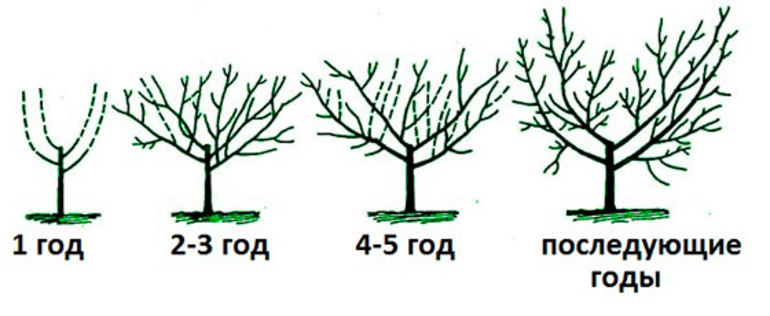
- In the first year after planting the central conductor is cut off by one-third of the entire length, and the remaining shoots - by two-thirds.
- The second phase is called regulatory. Performed for trees of all ages. During this procedure, the crown is diluted. The gardener must remove each fast and irregularly growing branch.
- Third stage permissible only if the tree has crossed the four-year boundary. Every 4 years, experts recommend a rejuvenating pruning, which allows you to remove all unnecessary and old branches that no longer give any crop.
After the first fruiting, it is better not to touch the tree, you can remove only the most problematic areas. All manipulations must be carried out on time, so that the plant has time to recover before the onset of cold weather. In autumn, specialists carry out sanitary pruning, which is based on the removal of diseased and damaged shoots.
Main rules
Since plum trees can be pruned at any time of the year except winter, removing unnecessary branches in the spring will not differ much from the procedure that is performed in the fall. The main thing is not to miss the optimal time for plant correction. The main cropping scheme is as follows:
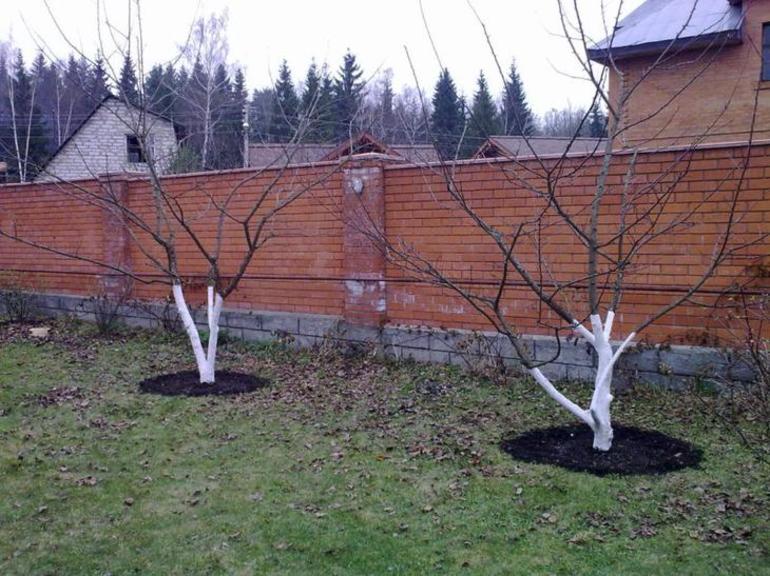
- The gardener must clearly determine which form of the crown he wants to form from the existing branches - palmette, spindle-shaped or Italian flat.
- The main skeleton of stone fruit is built from a maximum of six separate shoots of the same length.
- The crown should be formed with a scale of 60 cm.
- Only one center conductor is saved during trimming.
- Do not leave those branches that are located at an angle less than 40 ° to the trunk.
- Weak flexible shoots are pruned, because if frost is present, they will easily be damaged and break along with the bark. Because of this, wounds form on the tree, which serve as the entrance gate for infections and pests.
- You should always follow the rule: it is better to remove one thick branch than two thin ones.
Tips for beginners
Plum needs professional regular pruning, which will help maintain optimal condition and good fruiting of the plant. It is necessary to carry out such painstaking manipulations according to the scheme - spring, summer, autumn (sometimes even winter). Each period has its own value.
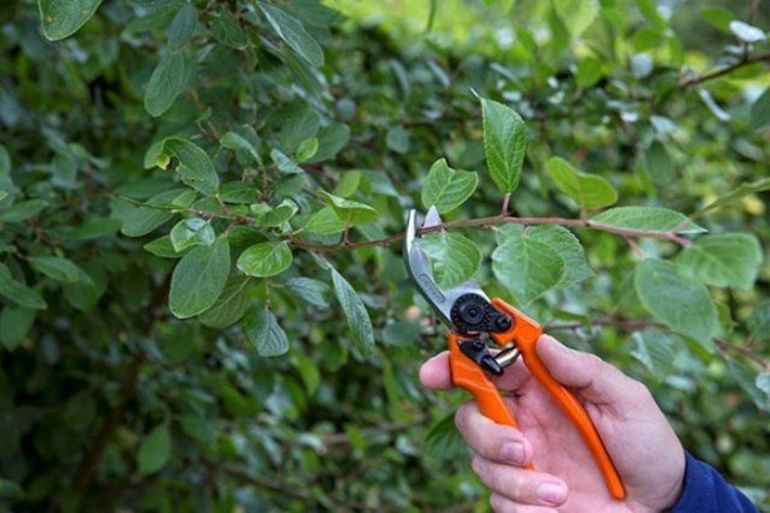
The most favorable for pruning is considered spring. The tree best tolerates interventions from March to late April. The air temperature must be stable (from + 10 °). Vegetation processes do not have to be activated yet. In the spring, new shoots that have already begun to grow in the wrong direction, as well as very old branches that do not give a crop, are clearly visible on the plum.
Summer pruning should take place in June. Experts recommend removing branches that greatly thicken the crown, especially since they are clearly visible in the lush foliage. Sanitary work with a tree is carried out in September. If the novice gardener missed the deadlines, then pruning is better to postpone until spring. Otherwise, the cut-off point may freeze, which will cause frostbite and gumming.Of course, each period has both positive and negative sides. Depending on the age and condition of the tree, the gardener chooses the most suitable option. Only in this case, the plum will give a high-quality and stable crop from year to year.
The way to rejuvenate an old tree
When a certain time period of fruiting passes, the plum needs to be rejuvenated. This is especially true in situations where planned circumcision was not always carried out.The main signal for this procedure is considered to be rare flowering or the presence of weak ovaries at the top of the crown.
Professionals recommend adhering to the following rejuvenation scheme:
- When the tree has reached 11 years of age, planned preventive dilution of the crown should be carried out every year. All branches that have been formed over four years are cut.
- It is important to monitor the correctness of the cut near those branches that grow rapidly with the advent of spring.
- Serious damage to the crown can be prevented if, at the first stage, the lowest shoots are removed.
- Of the new branches, it is necessary to leave the five most developed, and the rest completely cut off.
- It is not recommended to touch the smallest shoots (except for infected and broken ones).
- When the plum reaches 15 years of age, its top is neatly cut away, and the frame branches are shortened. In the future, they will be replaced by young healthy shoots.
It is forbidden to immediately remove all thick branches. They need to be cut within 3-4 years. When the height of the tree exceeds three meters, the gardener must trim not only the top of the central trunk, but also the old side branches. Due to this, the active growth of the plum stops.

